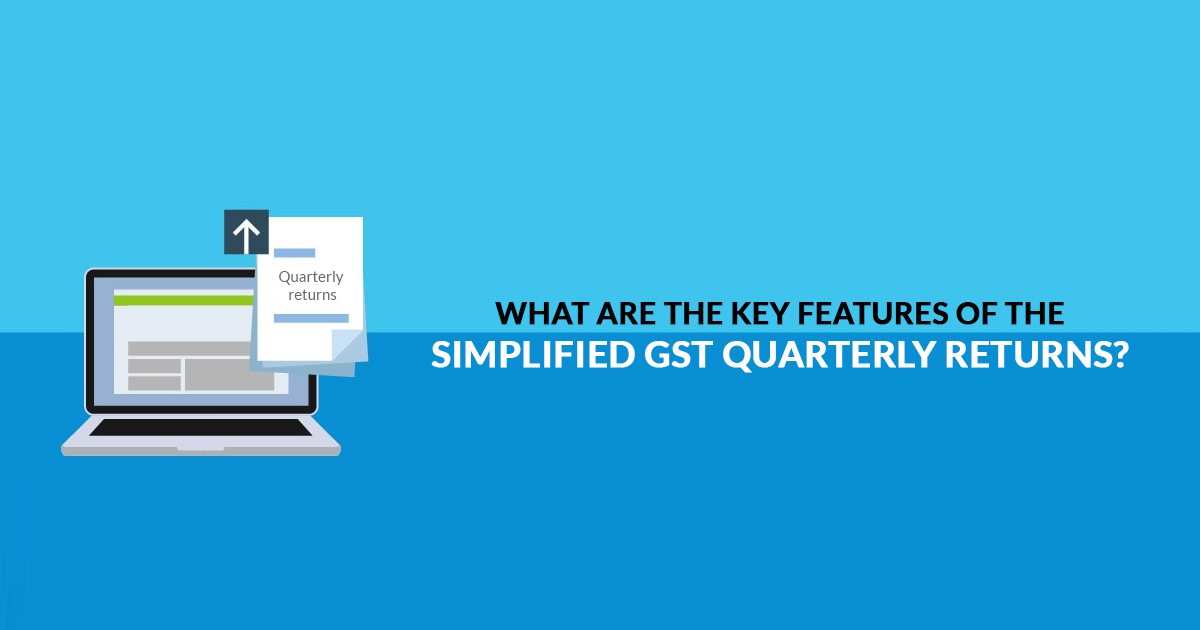Contents
GST Quarterly Forms for Small Traders and Business Owners
The new GST quarterly returns norms have come as a welcome relief for small traders and business owners who were grieved by burdening compliance procedures and rules. In this blog, we discuss salient features of the new GST quarterly returns.
GST Quarterly Returns: Eligibility and Features
Business owners, traders as well as new and old taxpayers with turnover not exceedings 5 Crores in the previous financial year can file quarterly returns. Such individuals can also opt for monthly returns if they wish to do so once during a year when the financial quarter begins.
Quarterly returns are a welcome break for small business owners from the monthly return norms. The return procedure is also significantly simplified. Taking into account the fact that small businesses deal with fewer suppliers, the GST council and the Finance Ministry has given important consolations in new quarterly returns filing.
These include :
Missing and pending invoice reporting has been omitted from quarterly returns filing.
Non-GST supplies, exempted supplies, etc. which do not create any liability.
Input tax credit on capital goods
Invoices which have not been uploaded by suppliers are termed as missing invoices. Pending invoices refer to those supplies which have not been yet received by the supplier or have been uploaded by the supplier but need correction. Also, invoices on which input tax credit claims have not been made yet by recipients are treated as pending invoices by the tax department. But quarterly return filers will have to furnish details of non-GST supplies, exempt supplies and input tax credit on capital goods in the Annual return.
Recommended: What are the key features of the Simplified GST monthly returns?
In case the business owner feels the need to report missing and pending invoices they can revert to monthly return filing at the start of a fresh quarter.
Types of GST Quarterly Returns
Quarterly Returns are of three types and taxpayers need to file returns as per that their business. These include:
Sahaj
Sahaj Returns are for businesses making purchases only from Indian suppliers and making sales to unregistered persons (B2C) or consumers in India.
Sugam
Sugam Returns are for businesses making purchases only from Indian suppliers and making supplies to both registered businesses as well as consumers or unregistered businesses (B2B + B2C) in India
Recommended: New Single GST Return Forms and Sahaj-Sugam Schemes from FY 2019
Quarterly Return
The third return form can be filed by business owners or taxpayers whose business activities expand to foreign shores in addition to domestic purchases and supplies. Business owners with import and export operations and yearly turnover less than 5 Crore can file quarterly returns.
Taxes will be paid on a monthly basis
For business owners and traders filing quarterly returns, taxes must be paid on monthly basis only. Taxpayers need to submit a payment declaration form for the same. The payment declaration form will contain all tax liabilities of the business owners depending on the invoices uploaded. On a similar line, based on the uploaded invoices, the taxpayer or business owners will be notified about their ITC ( input tax credit) claims. This will enable taxpayers to pay taxes as well as make ITC claims on a monthly basis.
One important point to note about payment declaration form is that taxpayers or business owners will not be penalized with additional penalties for minor mistakes or errors as it is a declaration form and not a return form.
Quarterly Returns but Monthly Tax
Late payment of taxes due for each month will attract interest on the liable tax amount. Quarterly returns are aimed primarily for reducing GST compliance burden on small businesses. Sahaj and Sugam returns are more than a welcome move from the GST Council and Tax Authorities.
However, taxpayers and business must remember that reporting of missing or pending invoices will require a shift to monthly return filing.






